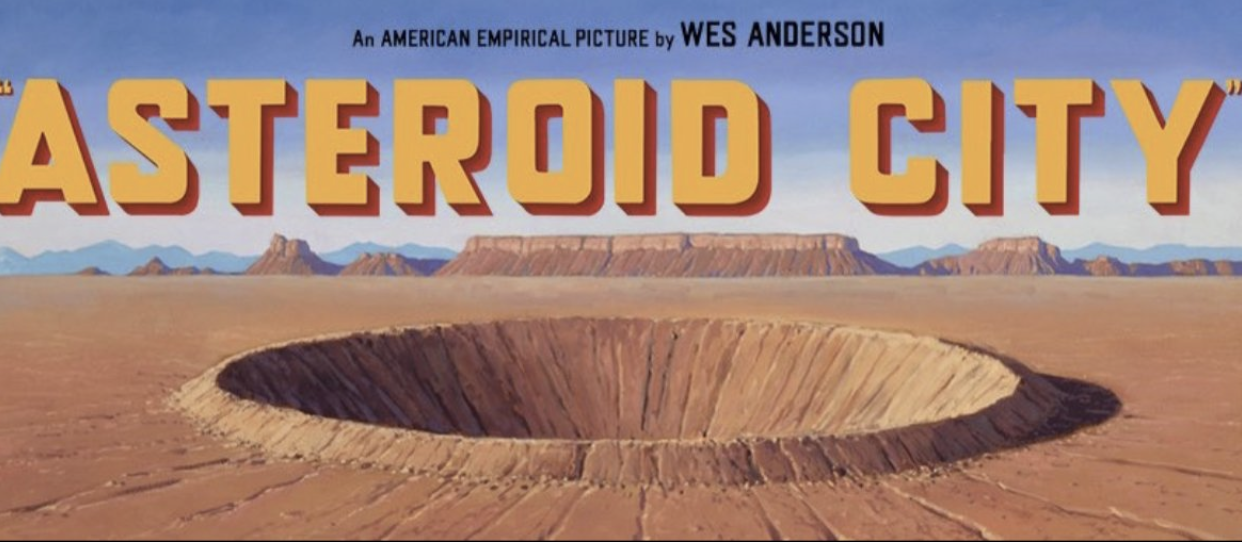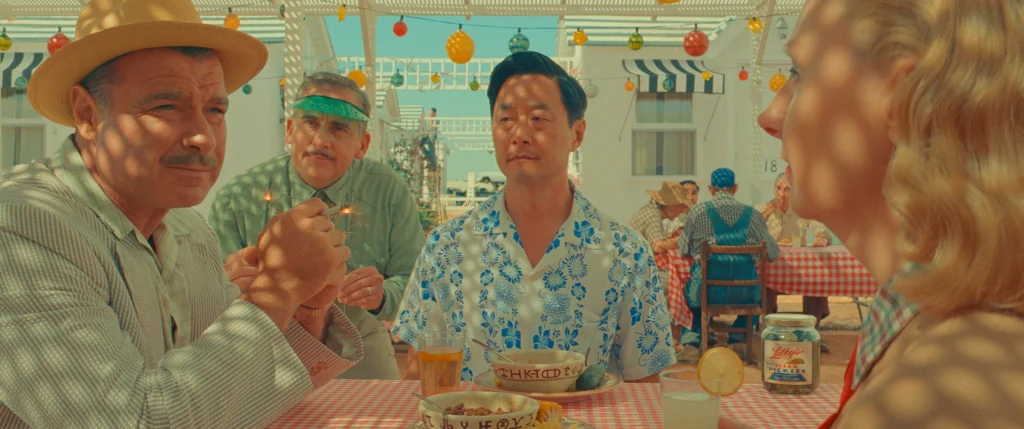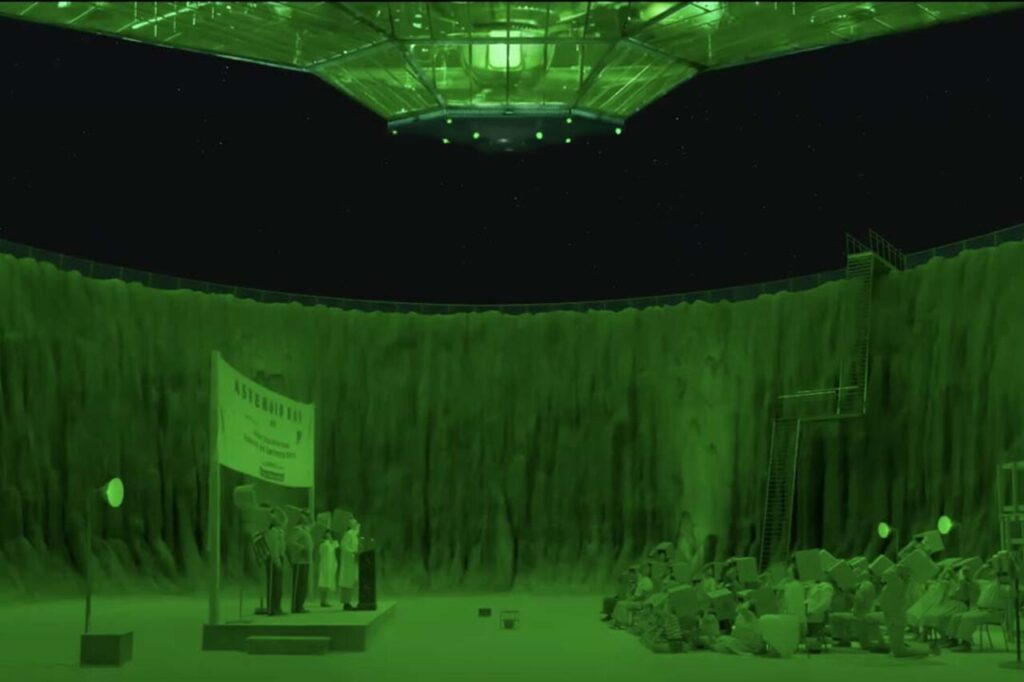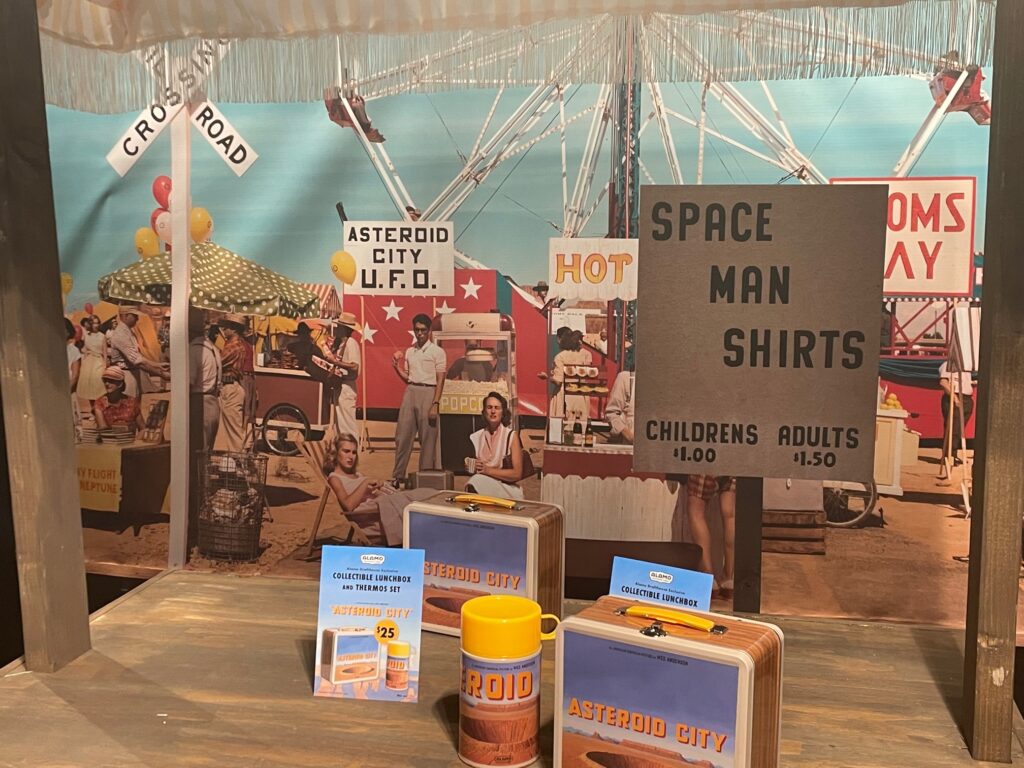
It’s been some years since I took the time to go to a theater specifically to catch a Wes Anderson movie. Hell, the last one I saw was Isle Of Dogs, which triple-downed on the whimsy, and was a fun little experiment in style, at least, if not very much by way of substance. Now some years later he rolls out Asteroid City, a film that safely straddles the border between science fiction, and experimental narrative, with an ensemble cast that excels wit the material, and a color palette that is so gorgeous it could be served on a plate. Billed ostensibly as a science fiction movie viewed through Anderson’s signature style, what played out was actually a treatise on creativity and art itself, as well as mourning and working through grief. All of this presented on screen as a movie adaptation of a play…and featuring Jeff Goldblum as a nonplussed alien.
Augie Steenbeck (Jason Schwartzman) has rolled into the eponymous Asteroid City — a military town on the cusp of a crater, wherein atomic tests have been conducted. In tow are his four children, the teenaged Woodrow (Jake Ryan), and young daughters Andromeda, Pandora, and Cassiopeia (Ella, Gracie, and Willan Faris, respectively), and the tech-obsessed Woodrow has been invited to partake in the Junior Stargazers camp, and to witness an event known as the Ellipsis, while simultaneously mourning the death of his wife, the children’s mother, with whose ashes they’re traveling. Augie’s plan for a relatively short trip is upended first by car problems, and then by the much more serious matter of a quarantine of Asteroid City, an event precipitated by the surprising encounter with a UFO. As the plethora of picaresque characters await the all-clear — and the Steenbeck’s await patriarch Stanley Zak (Tom Hanks) to pick up his grandchildren — what unfolds is a rather dense treatise on the act and catharsis of creation, and how sometimes straightforward expressions of feeling (and grief) can become muddled, but no less profound.
I’m loathe to actively try to parse through the meaning of a work as I’m watching it in real time, so allowing for some time for Asteroid City to sink in has been beneficial. I was lucky enough to have seen it about a week before its wide release, with a live Q&A with Wes Anderson and select members of the cast, at Brooklyn’s own Alamo Drafthouse back in late June. What struck me most — aside from his usual crisp compositions — was Anderson’s insistence on ambiguity in the film. No longer did his characters feel whimsical for the sake of whimsy, nor the conceit of his style seemingly off-puttingly ostentatious.
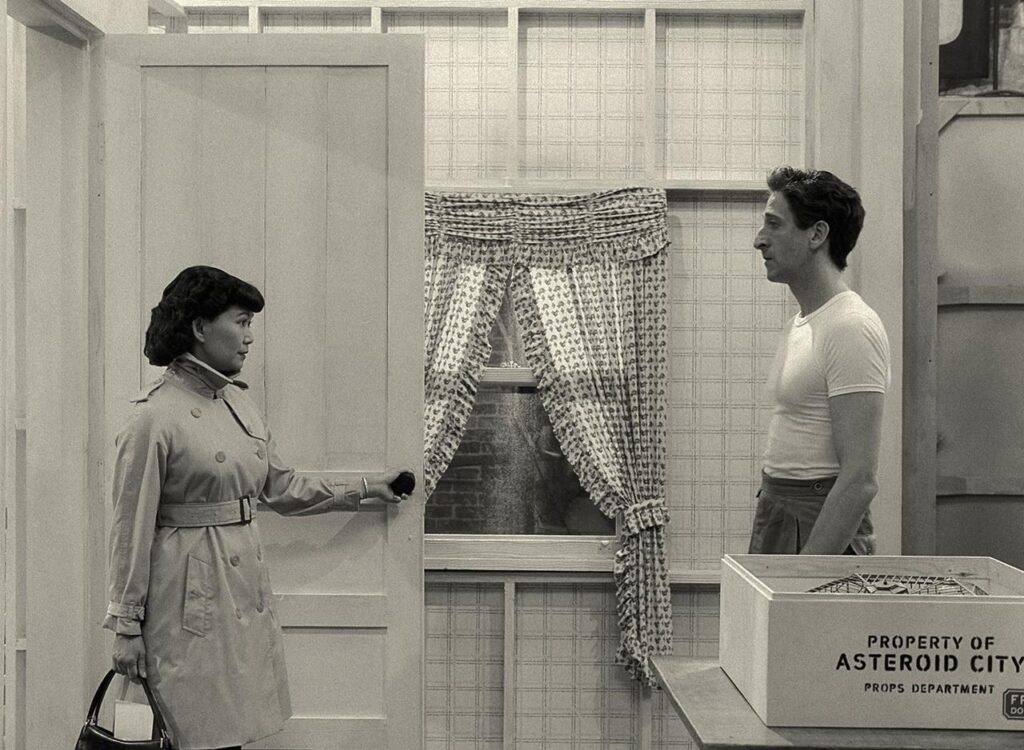
The sub-drama of playwright Conrad Earp (Edward Norton) agonizing over his latest work (in essence, a stage version of Asteroid City, the very movie we the audience are currently watching in real time), but so too are his actors struggling to find their characters. This is reflected in Midge Campbell’s (Scarlett Johannsson) attempts to find, and perfect, the essence of her newest character, one whom we see fleetingly during moments of practiced soliloquy. This comes to a head late in the third act when Augie (in black-and-white “stage play” version) walks off-set of what is the Asteroid City play, and recalls a memory of his late wife, herself played as a fictional character within the play.
Soon, characters blend into cinematic- and play-versions, as Bryan Cranston‘s Host, in a particularly funny bit, winds up in the Technicolor film world of Asteroid City, before realizing he doesn’t “belong” there. But where do characters belong, truly? And what does it matter in what medium their stories are being told, so long as they’re being told at all? What does it matter if a character’s motivation doesn’t “make sense” if the emotions elicited DO make sense?
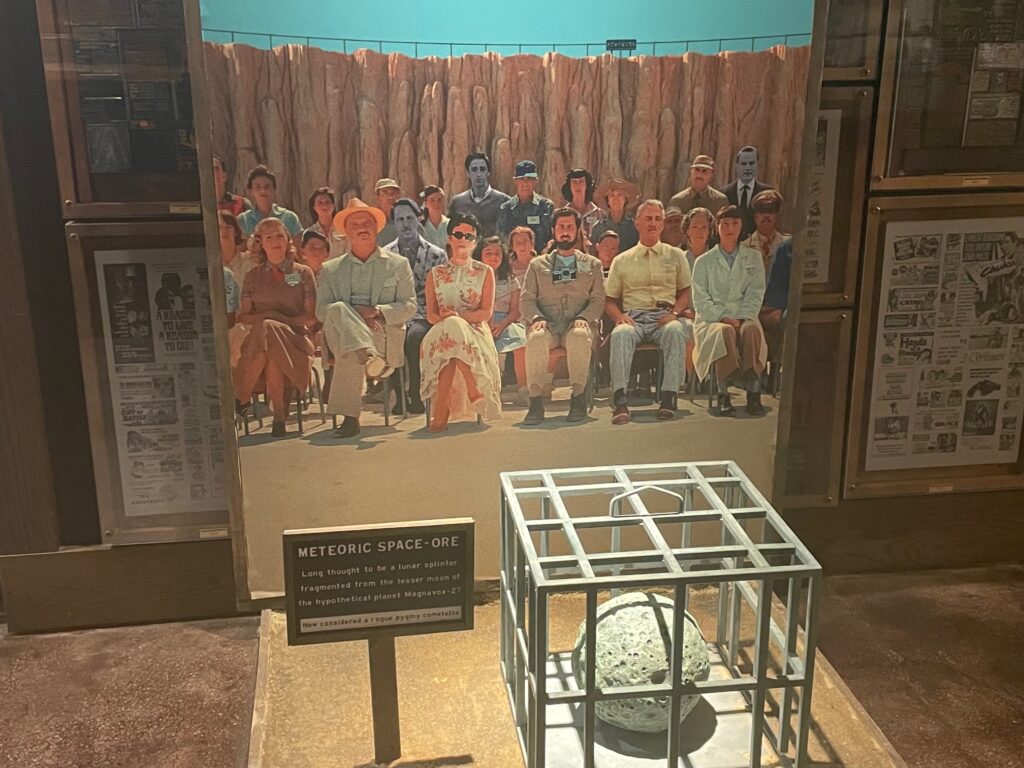
“You can’t wake up if you don’t go to sleep” is a refrain that is repeated throughout the latter half of the third act, when borders of style, setting, and theme blur together. And, indeed, it’s hard to reach to some deeper truths without a bit of dreaming and imagination. Those things are needed, just as Alexandre Desplat‘s fun, Western-tinged score is needed. Cinematographer Robert D. Yeoman — making great use of the atomic-age sense of wonder, and colorful sense of whimsy — paradoxically creates a contained, stage-crafted set that wouldn’t seem out of place in a Broadway theater, yet allows for such expansive vistas and depth as to make Asteroid City as real a place as any other small town off Route 66.
The cast is superb. All of them. There’s something so impressive to watch stars downplay their fame and just get down to doing the work of putting in a performance. There’s something so refreshing about a performance style that actually touches on stage performance — the tacit acknowledgement of an audience, and playing towards them, and of seemingly waiting for cues, and blocking, and having a keen eye for composition and stage direction — that is such a refreshing delight when a film chooses to play in that direction. I never would have thought this picaresque trip to a candy-colored Americana would work as well as it did, and be at once a send-up of Atomic Age science fiction AND the agony of creating a bit of art.
4.75/5 chili hotdog/martini vending machines.
Asteroid City is still playing in theaters, and also available via streaming.

